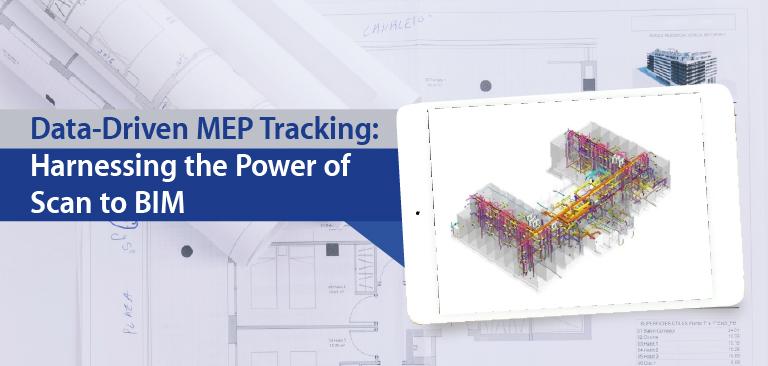How Point Cloud to BIM is Useful for Heritage Building Renovation

In this article, we highlight the top 7 advantages of utilizing Point Cloud to BIM modeling for renovation projects. This technology not only enhances precision but also optimizes project management by streamlining processes. Additionally, we discuss the specific challenges associated with renovating heritage buildings and propose effective solutions to navigate these complexities successfully.
Top Benefits of Point Cloud to BIM for Heritage Buildings
1. Precise Building Geometry: Point Cloud technology captures exact dimensions and geometrical details, creating accurate digital representations for renovation planning.
2. Greater Spatial Arrangement: It provides detailed visualization of unique architectural layouts, aiding in understanding and preserving original designs.
3. Accurate Load Calculations: Point Cloud to BIM models offer precise load calculations, ensuring structural stability during renovations.
4. Exact Material Quantity Consumption: This technology allows for accurate material estimations, reducing waste and promoting cost-efficiency.
5. Definite Renovation Timelines: Detailed 3D models facilitate efficient project planning and scheduling, adhering to timelines and preventing delays.
6. Project Cost Reduction: By minimizing errors and optimizing resource allocation, Point Cloud to BIM reduces overall project costs.
7. Better Risk Mitigation: It provides a comprehensive view of the building's condition, identifying vulnerabilities and planning interventions effectively.
How Point Cloud to BIM Addresses Renovation Challenges
Top 5 Challenges and Solutions:
1. Using invasive tools and technology on traditional materials
THE PROBLEM:
- Damage to building materials or equipment.
- Degradation of the actual significance of the monument building due to damage.
THE SOLUTION:
- Non-invasive laser scanners.
- Detailed visualization on dimensions, location, and material type with point cloud to Revit 3D model conversion.
2. Reinforcing structural issues with replacements
THE PROBLEM:
- Inability to survey hard-to-reach cracks, holes, or structural breaches.
- Lack of visualization of critical issues.
- Difficulty in decision-making due to inaccurate survey data.
THE SOLUTION:
- Laser scanners scan and register hard-to-reach spaces.
- Major or critical issues are easily visualized through coordinated 3D models.
- Clear visualization enables efficient decision-making.
3. Restoring heritage monuments to fully functional structures
THE PROBLEM:
Traditional surveying methods result in:
- Inaccurate 2D sketches or drawings.
- The laborious procedure of restoring a historic monument to a fully functional state.
THE SOLUTION:
Point Cloud to BIM 3D models enable accurate structural creation with:
- Accurate shapes, sizes, curves, and extrusions.
- Accurate modeling geometry based on QA/QC workflows and checklists.
- Custom Revit family creation of various components or systems.
4. Conforming to building codes and regulations
THE PROBLEM:
- Safety breaches due to lack of consideration of international renovation or building codes.
- Lack of proper H&S-BIM renovation codes during renovation.
THE SOLUTION:
Point Cloud to BIM models use:
- International building codes focus on general codes, occupancy exceptions, floor hazards, unsafe conditions, repairs, alterations, and fire safety.
- Specific H&S-BIM codes and regulations for greater accuracy, efficiency, and safety.
5. Finding the right Point Cloud to BIM partner
THE PROBLEM:
Partnering with the wrong BIM team leads to:
- Time loss, cost overruns, and rework.
- Lack of understanding of design intent and project needs.
THE SOLUTION:
Point Cloud to BIM conversion of laser scan data by skilled BIM experts provides:
- Savings of cost and time with clear and fast communication and high-quality standards.
- A better understanding of design intent with insights into pre-existing conditions with digitized models.
Conclusion
Point Cloud to BIM technology is a game-changer for heritage building renovations, offering precise, detailed, and non-invasive solutions to complex challenges. From accurate geometry capture to efficient project management, this technology ensures that heritage structures are preserved and revitalized with care. By leveraging the benefits of scan to BIM, surveyors, and architects can protect the cultural and historical value of these buildings while ensuring successful renovation outcomes. As the industry continues to embrace this technology, the future of heritage building preservation looks promising and sustainable.
Looking for Point Cloud to BIM solutions?
Contact our Point Cloud to BIM experts for your heritage building restoration and renovation projects.










Comments